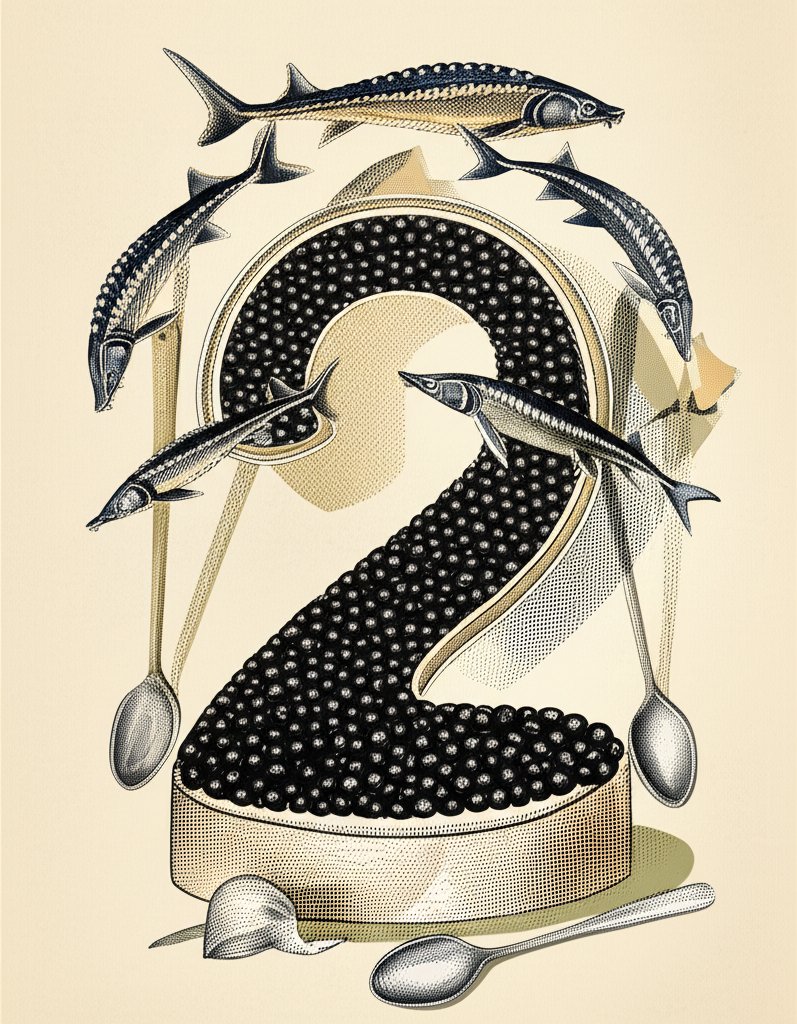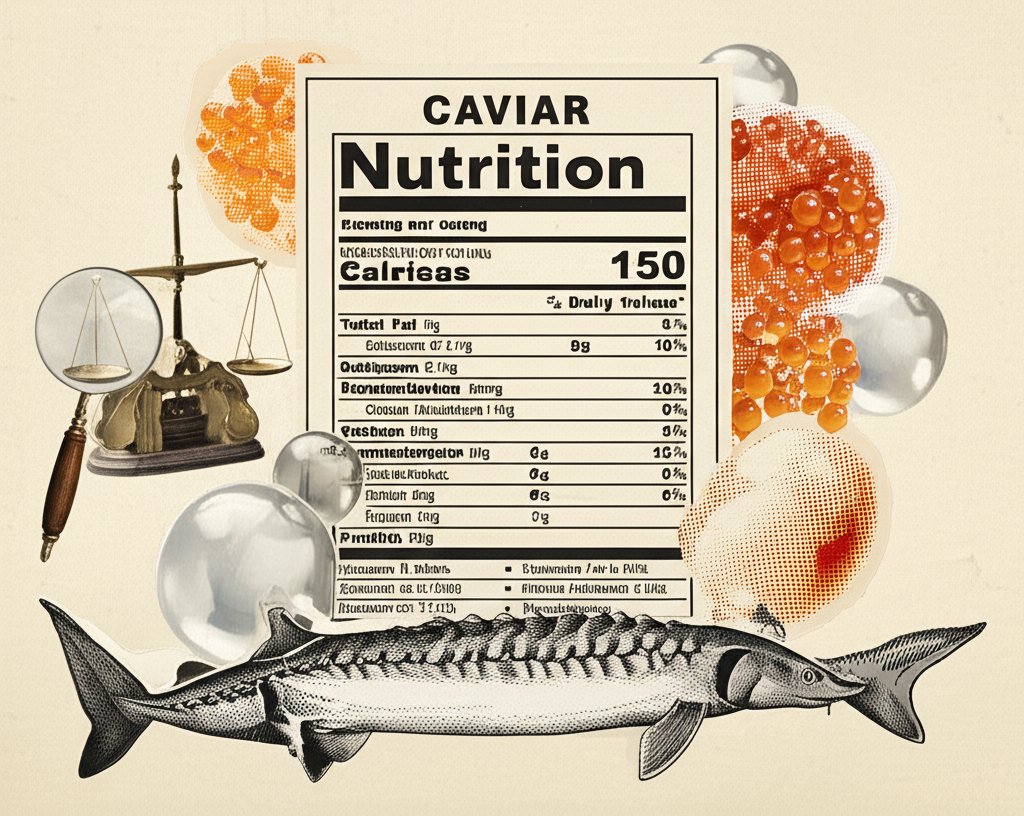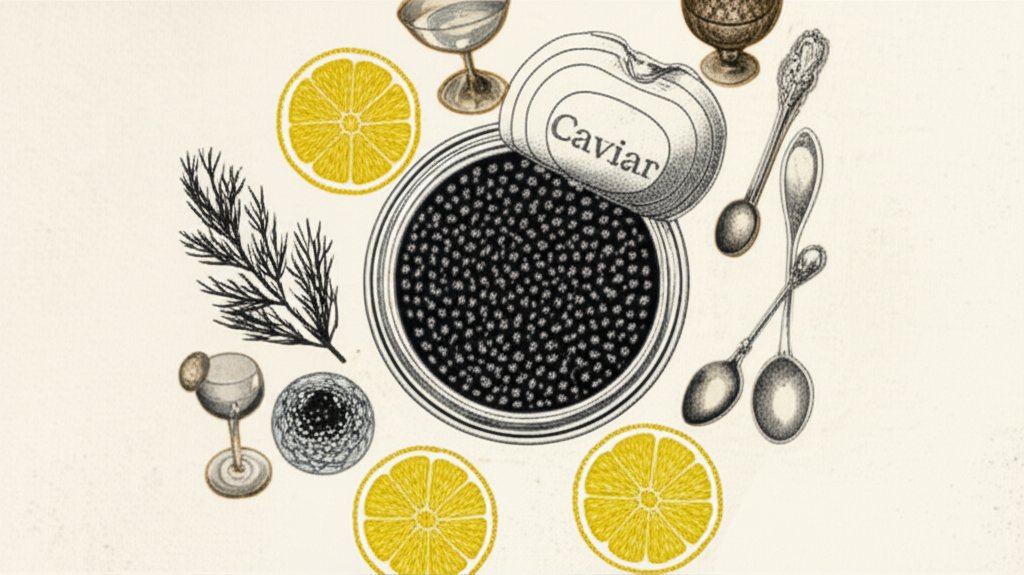Thinking about indulging in caviar? Beyond the luxurious experience, understanding caviar nutrition facts can help you make informed choices about this delicacy. Is it just an expensive treat, or does it offer genuine nutritional benefits?
At a glance:
- Caviar is a nutrient-dense food, packed with vitamins, minerals, and healthy fats.
- Its high sodium content may be a concern for some individuals.
- The sustainability and ethical sourcing of caviar are important considerations.
- Serving size significantly impacts the nutritional benefits and potential drawbacks.
- Comparing caviar’s nutritional profile to other foods can help you balance your diet.
What Exactly is Caviar? A Quick Primer
Caviar refers to the unfertilized eggs (roe) harvested from sturgeon fish. The most prized types come from specific sturgeon species like Beluga, Ossetra, and Sevruga. The flavor, texture, and size of the roe vary depending on the species, affecting the price and culinary experience. While “caviar” is often misused to describe other types of fish roe (like salmon or lumpfish), true caviar comes exclusively from sturgeon.
Caviar Nutrition Facts: A Detailed Breakdown (per 1-tablespoon serving – ~16g)
It’s crucial to remember that caviar is typically consumed in small quantities. Here’s a breakdown of what a single tablespoon serving provides:
| Nutrient | Amount (approx.) |
|---|---|
| Calories | 42 |
| Protein | 3.9 g |
| Fat | 2.9 g |
| Carbohydrates | 0.64 g |
| Sodium | 240 mg |
| Vitamin B12 | 0.9 mcg (15% DV) |
| Vitamin D | 33 IU (8% DV) |
| Iron | 0.6 mg (3% DV) |
| Magnesium | 5 mg (1% DV) |
| Selenium | 9 mcg (16% DV) |
| Calcium | 5 mg (1% DV) |
| Omega-3 Fatty Acids | ~0.5 g |
| Data based on general averages; specific values may vary depending on the caviar type and preparation. |
The Good: Nutritional Benefits of Caviar

Caviar offers several notable health benefits, concentrated in a tiny portion:
- Rich in Omega-3 Fatty Acids: These essential fats are vital for brain health, heart health, and reducing inflammation. Caviar provides both EPA and DHA, the most beneficial types of omega-3s.
- Excellent Source of Vitamin B12: Vitamin B12 is crucial for nerve function, DNA synthesis, and red blood cell production. Caviar is a particularly good source, important for those who may be deficient.
- Provides Selenium: This mineral acts as an antioxidant, protecting cells from damage and supporting thyroid function.
- Good Source of Protein: While the serving size is small, the protein in caviar is complete, meaning it contains all nine essential amino acids.
- Vitamin D boost: Caviar contains Vitamin D, which is important for bone health and immune function. Many people are deficient in Vitamin D, especially those living in areas with limited sunlight.
The high concentration of these nutrients makes caviar an appealing addition to a balanced diet, especially for those looking to boost their intake of specific vitamins and healthy fats. Like buttermilk, caviar also contains a range of vitamins and minerals, but the nutritional profile differs significantly. Learn about buttermilk nutrition. This comparison can help you determine which food best suits your nutritional needs.
The Not-So-Good: Potential Drawbacks
Despite its impressive nutrient profile, caviar has potential downsides to consider:
- High Sodium Content: This is the biggest concern. A single tablespoon can contribute a significant amount to your daily sodium intake. Individuals with hypertension or those watching their sodium intake should be particularly mindful.
- Cholesterol: While dietary cholesterol isn’t as demonized as it once was, caviar does contain a notable amount. Individuals with cholesterol concerns should consume it in moderation.
- Purines: Caviar is high in purines, which can be problematic for people with gout. Purines break down into uric acid, which can accumulate in the joints and cause pain.
- Cost: Let’s be honest, caviar is expensive. Relying on it as a primary source of nutrients is not financially practical for most people.
- Sustainability Concerns: Overfishing and illegal trade have plagued the caviar industry. Opting for sustainably sourced caviar is crucial to ensure the long-term health of sturgeon populations. Look for certifications like CITES (Convention on International Trade in Endangered Species) to ensure responsible sourcing.
Making Informed Choices: Dosage and Frequency
The key to enjoying caviar’s benefits while minimizing potential drawbacks lies in portion control and frequency.
- Stick to Small Servings: A tablespoon or less is generally sufficient. This allows you to enjoy the flavor and nutritional benefits without overloading on sodium or cholesterol.
- Not an Everyday Food: Given its price and sodium content, caviar is best enjoyed as an occasional indulgence rather than a dietary staple.
- Pair Wisely: Consider pairing caviar with low-sodium accompaniments like plain crackers or blinis to balance the overall sodium intake of your meal.
Example: A person trying to increase their omega-3 intake might incorporate a small serving of caviar (1/2 tablespoon) once a week, alongside other omega-3-rich foods like salmon and flaxseeds.
Comparing Caviar Nutrition to Other Indulgences

How does caviar stack up against other luxurious treats?
| Food | Calories (per 1 tbsp) | Sodium (mg) | Omega-3s (mg) | Protein (g) |
|---|---|---|---|---|
| Caviar | 42 | 240 | ~500 | 3.9 |
| Foie Gras | 60 (approx.) | 20 | Trace | 2 |
| Dark Chocolate (70% cacao) | 70 | 0 | Trace | 1 |
| This comparison highlights that while foie gras is lower in sodium, caviar offers a significant advantage in omega-3 fatty acids and protein. Dark chocolate provides fewer micronutrients for similar calories. This doesn’t mean one is “better,” but understanding the trade-offs helps you align your indulgences with your nutritional goals. |
A Practical Guide to Enjoying Caviar Responsibly
Here’s a short playbook to maximize enjoyment while minimizing potential downsides:
- Source Wisely: Prioritize sustainably sourced caviar from reputable vendors.
- Portion Control: Limit servings to one tablespoon or less.
- Sodium Awareness: Factor caviar’s sodium content into your daily intake.
- Pair Thoughtfully: Choose low-sodium accompaniments.
- Frequency: Enjoy as an occasional treat, not a daily staple.
- Store Properly: Keep refrigerated and consume promptly after opening to maintain quality and prevent spoilage.
- Consider your Health: If you have concerns about sodium, cholesterol, or purines, consult your doctor or a registered dietitian.
Quick Answers to Common Questions about Caviar Nutrition
Q: Is caviar a good source of protein?
A: Yes, caviar is a complete protein source, containing all nine essential amino acids. However, the amount of protein per serving is relatively small due to the typical serving size.
Q: Can I eat caviar if I’m watching my sodium intake?
A: Yes, but in moderation. Be mindful of the sodium content and adjust your overall diet accordingly. Choose lower-sodium accompaniments and consider caviar a rare treat.
Q: Is all caviar the same nutritionally?
A: No. Different types of sturgeon produce caviar with slightly varying nutritional profiles. However, the general nutritional benefits and drawbacks (high sodium, omega-3s, etc.) remain consistent.
Q: Does caviar go bad easily?
A: Yes. Caviar is highly perishable and should be stored properly (refrigerated) and consumed promptly after opening. Follow the vendor’s storage instructions carefully.
Q: Is caviar safe to eat during pregnancy?
A: Consult your doctor. Due to the sodium content and potential for listeria contamination (though rare with reputable brands), it’s best to seek professional medical advice before consuming caviar during pregnancy.
Final Thoughts: Savor the Flavor, Mind the Facts
Caviar can be a delicious and surprisingly nutritious addition to your diet, provided you’re mindful of its potential drawbacks. By understanding caviar nutrition facts and practicing moderation, you can savor this delicacy responsibly and make informed choices that align with your health goals. Enjoy the experience knowing you’ve considered both the taste and the nutritional content.
- Bento Tray Revolutionizes Organized Meal Transport and Presentation - December 10, 2025
- Meal Plans for Busy Schedules That Make Healthy Eating Easy - December 10, 2025
- Where to Buy Bento Boxes for Healthy, Organized Meals - December 9, 2025










